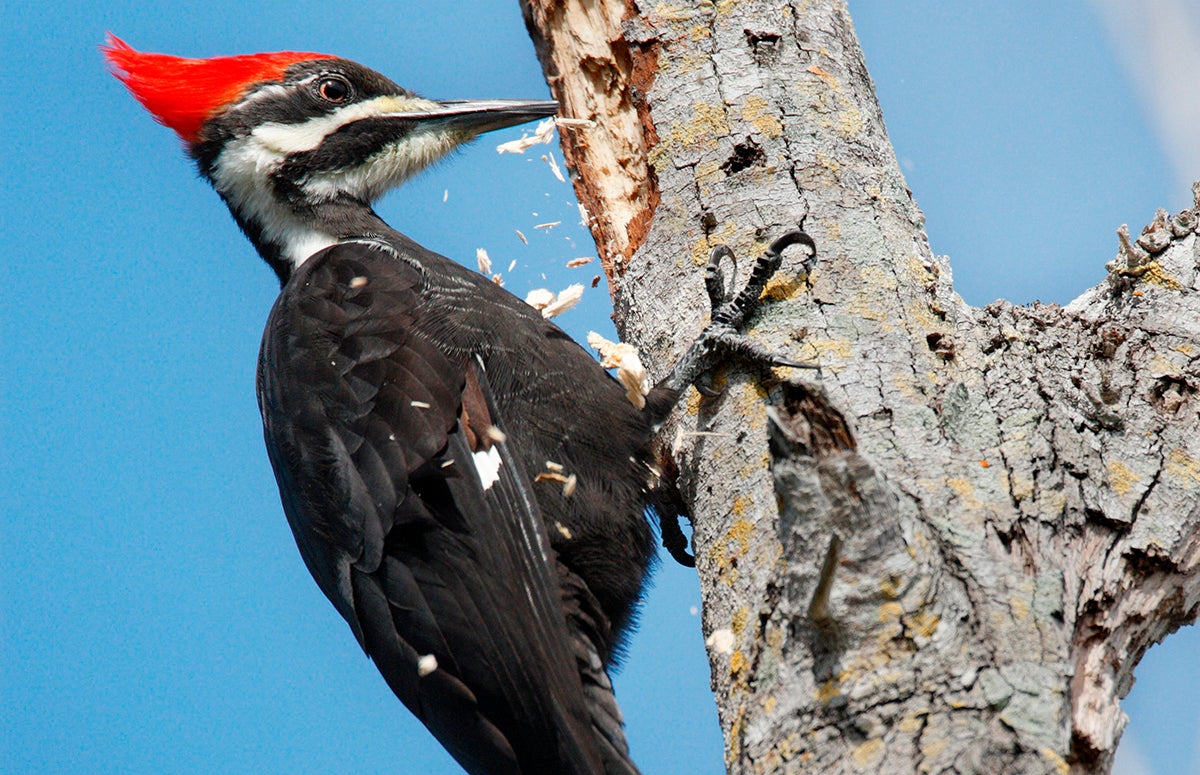Exploring Woodpeckers in Florida Habitats: Where to Spot These Birds
Exploring Woodpeckers in Florida Habitats: Where to Spot These Birds
Blog Article
Woodpeckers Unleashed: Exploring the Wonders of These Competent Tree Climbers
Woodpeckers, with their unique markings and balanced drumming echoing with wooded areas, hold a special place in the bird globe - Woodpeckers in Florida. As we dig right into the elaborate information of woodpeckers' nesting habits, feeding strategies, and the ongoing preservation initiatives to safeguard these impressive birds, a deeper recognition for their area in nature unfolds.
Makeup and Adaptations
When examining the composition and adjustments of woodpeckers, one can observe remarkable functions that make it possible for these birds to thrive in their specialized environmental particular niche. Woodpeckers are equipped with a suite of one-of-a-kind anatomical attributes that assist them in their woodpecking behavior. One of the most famous attributes is their solid, chisel-like beak, which is specialized for drilling right into timber to discover pests or develop nesting cavities. This beak is sustained by solid neck muscles and a highly developed skull structure that functions as a shock absorber, permitting woodpeckers to repeatedly peck at trees without causing brain injury. Furthermore, woodpeckers have zygodactyl feet, with two toes dealing with ahead and 2 dealing with in reverse, giving a company grasp on tree trunks while they look for food or drum for interaction.
In addition, woodpeckers have an one-of-a-kind tongue framework that is long, barbed, and sticky, allowing them to draw out bugs from crevices in timber. This specific adaptation permits woodpeckers to manipulate a food source that is inaccessible to many various other bird varieties. Generally, the composition and adaptations of woodpeckers display the exceptional evolutionary solutions that have actually enabled these birds to flourish in their arboreal habitat.
Drumming Actions
Having explored the makeup and adaptations of woodpeckers, the focus currently shifts to understanding their drumming actions, an unique aspect of their interaction and territorial screens. Drumming is a vital kind of communication amongst woodpeckers, offering multiple objectives such as establishing regions, drawing in friends, and signaling alarm system. Each woodpecker types has a distinct drumming pattern that helps people identify members of their own species and distinguish them from rivals or predators.
Woodpeckers produce drumming audios by swiftly pecking on powerful surfaces such as dead trees, energy poles, and even steel things, producing a collection of rhythmic beats. The strength and rate of drumming can vary based upon the function; for example, a quick drumming sequence may symbolize aggression in the direction of intruders, while a slower and softer drumming pattern can indicate courtship (Woodpeckers in Florida). Furthermore, woodpeckers might adjust the frequency and period of their drumming to convey particular messages effectively
Nesting Behaviors
Discovering the nesting habits of woodpeckers reveals remarkable understandings into their reproductive habits and environment selections. Woodpeckers my website are known for their special nesting choices, frequently excavating dental caries in trees to develop sheltered spaces for increasing their young. These dental caries offer not just as a nesting site but likewise as a safe and secure haven from predators and harsh weather condition.
Woodpeckers display a high degree of integrity to their nesting websites, usually returning to the same location every year. This habits highlights the value of ideal environment schedule for their reproductive success. The option of a nesting website is crucial for woodpeckers, with elements such as tree species, elevation, and decay phase playing substantial navigate to this site roles in their decision-making process.
Interestingly, some woodpecker species are known to excavate multiple cavities within their region, giving themselves with different nesting options. This method might work as a kind of insurance coverage against potential threats view website or disturbances to their main nesting website.

Feeding Strategies
One of the most distinct feeding behaviors of woodpeckers is drumming, which includes quick pecking on trees to reveal pests beneath the bark. Woodpeckers are also known to excavate cavities in trees to accessibility surprise insect larvae or sap. Some varieties, like the acorn woodpecker, shop nuts in particularly developed openings called granaries.
Conservation Efforts
Amidst the intricate feeding techniques exhibited by woodpeckers, the preservation initiatives focused on securing these interesting birds play a vital function in preserving their habitats and populaces. Woodpeckers deal with different risks to their survival, including environment loss because of deforestation, climate adjustment modifying their environments, and collisions with synthetic frameworks such as structures and cars - Woodpeckers in Florida. Guardians are proactively functioning to deal with these challenges and make certain the long-lasting well-being of woodpecker varieties

Education and learning and public recognition projects are likewise vital components of woodpecker preservation initiatives. By increasing awareness concerning the value of these birds in preserving healthy woodland ecological communities, guardians can garner assistance for environment conservation efforts and advertise responsible land management techniques. Via collaborative efforts in between researchers, policymakers, and regional areas, we can interact to secure a future where woodpeckers flourish in their natural habitats.
Final Thought
/https://tf-cmsv2-smithsonianmag-media.s3.amazonaws.com/filer_public/30/ac/30acf469-09cd-4fcc-a812-1aa30f477578/aprmay2024_l09_woodpeckers.jpg)
Report this page